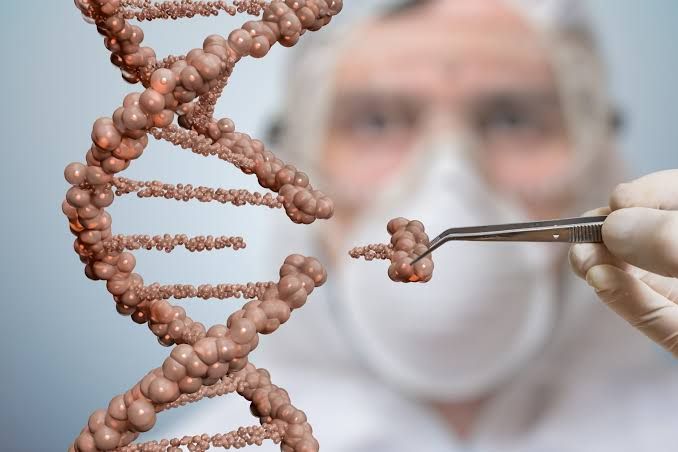
Genetic manipulation of cells involves various techniques that allow scientists to alter the genetic material within a cell. This can be done for a variety of purposes, including research, therapeutic applications, and biotechnology. Below, we will explore several methods used in genetic manipulation, categorized into electrical, mechanical, chemical, viral, laser methods, and the use of reporter genes.
(a) Electrical Methods
Electrical methods for genetic manipulation primarily involve electroporation. This technique uses an electric field to increase the permeability of the cell membrane. Here’s how it works:
- Preparation: Cells are suspended in a solution containing the DNA or RNA that is to be introduced.
- Electroporation: An electric pulse is applied to the cell suspension. The electric field creates temporary pores in the cell membrane.
- DNA Uptake: The DNA or RNA molecules enter through these pores into the cytoplasm.
- Recovery: After electroporation, cells are allowed to recover in a suitable medium to express the introduced genetic material.
Electroporation is widely used due to its efficiency and ability to introduce large plasmids into various types of cells.
(b) Mechanical Methods
Mechanical methods include techniques such as microinjection and biolistics (gene gun).
Microinjection
- Setup: A fine glass needle is used to inject DNA directly into the nucleus or cytoplasm of a target cell.
- Precision: This method allows for precise control over the amount and location of DNA introduced.
- Applications: Commonly used in animal cell manipulation and transgenic organism creation.
Biolistics (Gene Gun)
- Mechanism: Small gold or tungsten particles coated with DNA are propelled into target cells using high-velocity gas.
- Targeting: This method is particularly useful for plant cells where cell walls can hinder other forms of DNA uptake.
- Efficiency: It allows for transformation without needing to disrupt cellular membranes significantly.
(c) Chemical Methods
Chemical methods involve using various chemicals to facilitate DNA uptake by cells.
- Calcium Phosphate Transfection:
- Calcium phosphate precipitates form complexes with DNA that can be taken up by cells through endocytosis.
- This method is relatively simple and cost-effective but may have variable efficiency depending on cell type.
- Lipofection:
- Lipid-based reagents encapsulate DNA in lipid vesicles (liposomes) that fuse with cell membranes.
- This method is widely used due to its high efficiency and low toxicity compared to other methods.
- Polyethylenimine (PEI):
- PEI can condense DNA into nanoparticles that facilitate cellular uptake through endocytosis.
- It has been shown to be effective across various cell types.
(d) Viral Methods
Viral vectors are engineered viruses that can deliver genetic material into host cells efficiently.
- Types of Viral Vectors:
- Retroviruses: Integrate their genome into the host’s DNA; commonly used for stable gene transfer.
- Adenoviruses: Do not integrate but can carry large inserts; useful for transient expression.
- Lentiviruses: A subclass of retroviruses capable of infecting dividing and non-dividing cells.
- Process:
- Viruses are modified to carry desired genes while being rendered replication-deficient.
- They infect target cells and deliver their genetic payload effectively.
(e) Laser Methods
Laser-based techniques utilize focused light energy for precise delivery of genetic material:
- Laser-Induced Forward Transfer (LIFT):
- A laser pulse generates a shock wave that propels biomolecules from a donor substrate onto target cells.
- This method allows for spatial control over where genes are delivered on a cellular level.
- Optogenetics:
- While primarily used for controlling cellular activity with light, it can also involve introducing light-sensitive proteins via laser-assisted techniques.
Reporter Genes
Reporter genes are essential tools in genetic manipulation:
- Functionality:
- These genes encode proteins that provide measurable signals (e.g., fluorescence or enzyme activity) when expressed in a host organism.
- Common Examples:
- Green Fluorescent Protein (GFP): Emits green light when exposed to UV or blue light; widely used as a marker for gene expression studies.
- β-galactosidase: Produces colorimetric changes when substrates are added; useful in assays measuring gene expression levels.
- Applications:
- Reporter genes help researchers visualize gene expression patterns and confirm successful genetic manipulations.
In conclusion, each method described above has its own advantages and limitations depending on factors such as target cell type, desired outcome, efficiency requirements, and safety considerations in experimental designs involving genetic manipulation.







